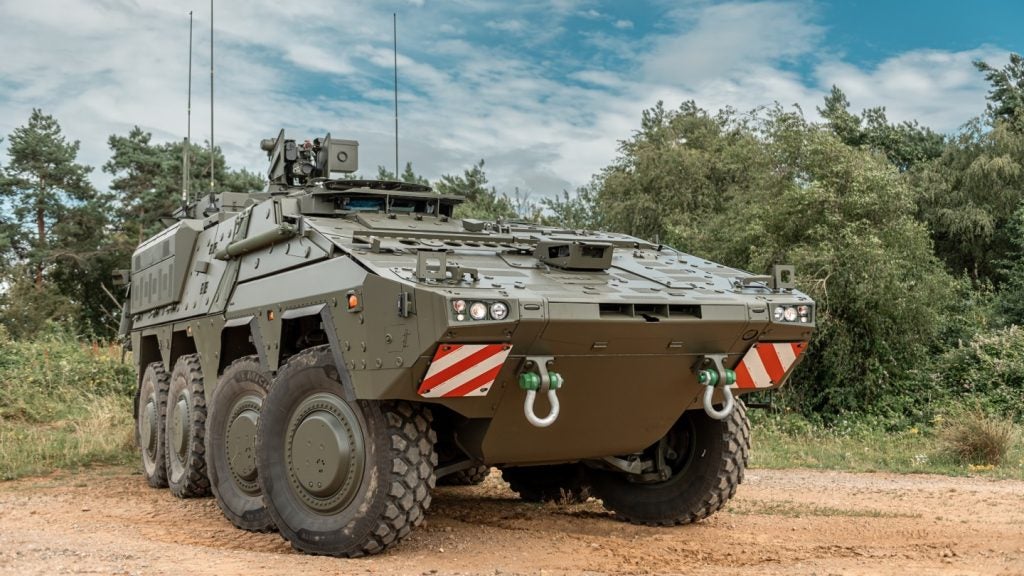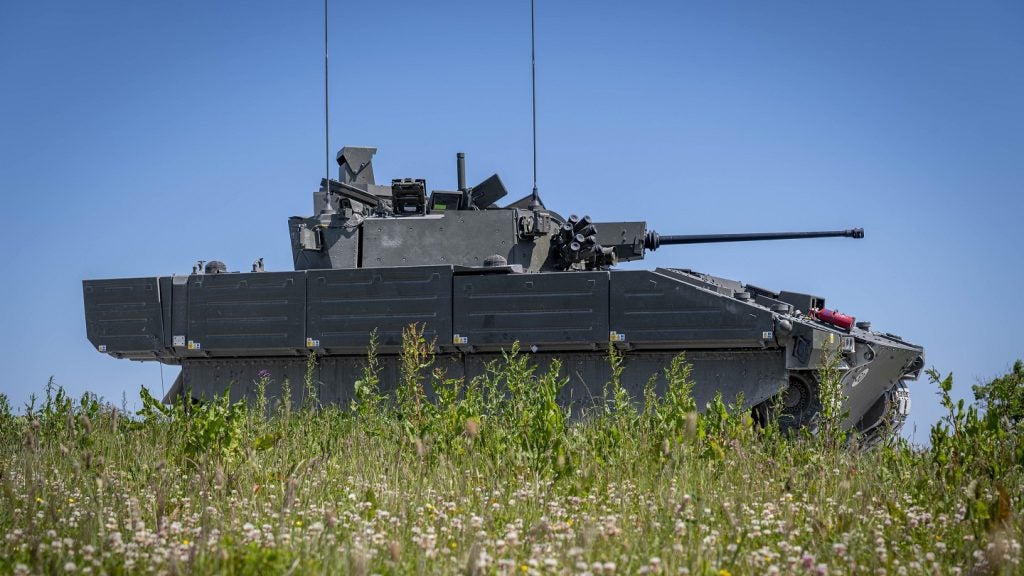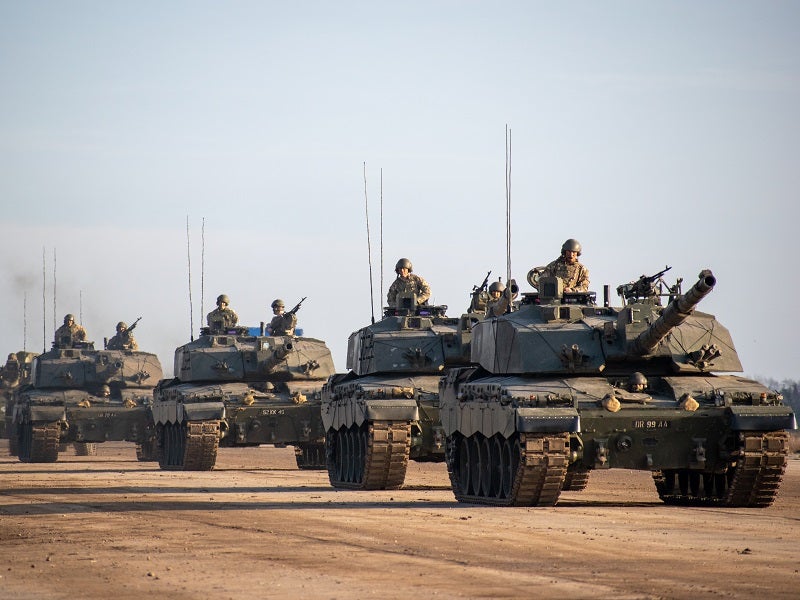
The British Army is falling behind in key capabilities compared to its peer group, with gaps in areas such as deep fires and medium-range air defence, according to Ben Wallace, UK Secretary of State for Defence.
Providing evidence to the UK House of Lords International Relations and Defence Committee on 1 November, Wallace said the force was “15 years out of date” compared to its peer group, which did not include non-peer rivals elsewhere, such as the world’s nuclear powers. Much of the UK’s land equipment is ageing, potentially obsolescent, and in need of replacement.
Traditionally, the UK has operated as an expeditionary power, rather than as a continental force, making up for what it lacks in mass through a high level of equipment to provide a full spectrum military capability.
Responding to queries as to the ability of the British Army to field a full armoured division, a capability preferred by its main US ally as being critical to its place as a leading security partner, Wallace told the House of Lords committee that no such force had been realistically deployable since 1991, inferring the UK’s commitment during the First Gulf War.
Even then, Wallace said that the UK did not deploy “a full armoured division” with the force comprised of two armoured brigades and an infantry assault component.
“For many decades, we haven’t delivered [armoured division capability],” he said, adding that gaps existing in the current force in areas such long-range artillery, medium-range air defence, electronic warfare, and signals intelligence.
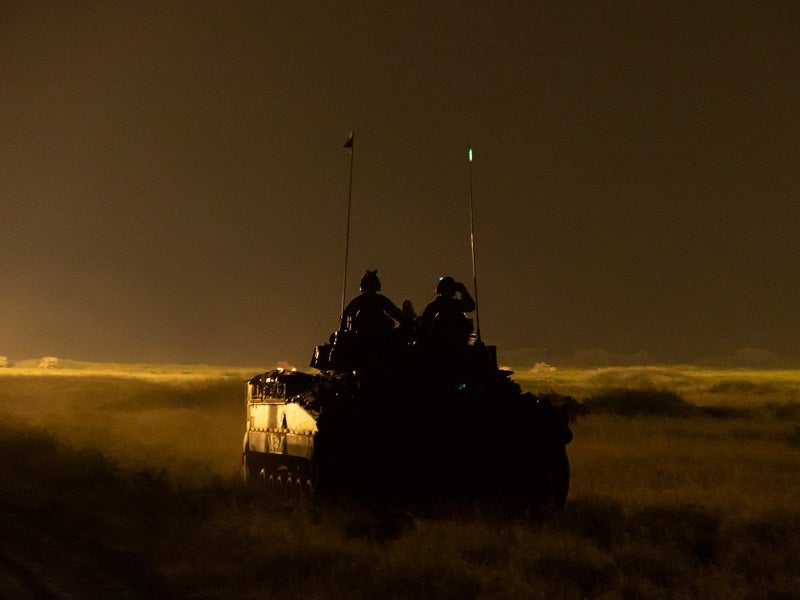
Tristan Sauer, land domain analyst at GlobalData, told Army Technology that the main reason for the British Army’s failed defence procurement had its origins from during the Global War on Terror, which left the British defence industrial base “gutted” of both technical expertise and manufacturing capacity.
“Due to a lack of support from government contracts, British firms have failed to keep pace with the global shift to supplying equipment for peer-to-peer conflicts. The UK MoD has increasingly had to look for joint procurement opportunities with allies to supplant the UK’s lack of industrial capacity,” Sauer said, pointing to programmes such as RBSL’s Boxer and the F-35 Joint Strike Fighter, adding that in doing so has “demonstrated failures in oversight”, which caused “further hurdles to modernisation”.
Out with the old…
The UK’s fleet of 227 Challenger 2 main battle tanks is in desperate need of upgrading, with the process seeing 148 vehicles to be updated to the Challenger 3 variant with the development of a new turret, optics, and main gun in order to gain parity with the Leopard 2 battle tank favoured by many European countries.
Elsewhere, its Warrior fleet is due to be retired in the mid-2020s, with the type’s planned Capability Sustainment Programme, delivering a new current and main gun, cancelled in 2021 after significant expenditure and delivery of the first batch of upgraded test vehicles by contractor Lockheed Martin.
Meanwhile, the Ajax family of armoured vehicles intended to form the lead element of the UK Strike Brigades, a concept many years in the making, continues to face delays after trials vehicle delivered to the British Army were deemed unsafe for operations after causing injuries to military personnel during testing. Trials were only resumed in October this year after being paused in mid-2021.
In response to the need to modernise much of its armoured mobility fleet, the UK has opted to switch to a mixed tracked-wheeled armoured force mix with the addition of the Boxer platform, of which around 750 are planned to be procured. This figure could rise to more than 1,000 vehicles depending on whether additional variants, such as the heavy mortar, or 155mm fire support modules, could be sought, Wallace stated.
However, an element of positivity for the British Army and the UK Ministry of Defence can be detected with the announced plan to increase its M270 Multiple Launch Rocket System fleet by up to 100%, from its current standing of around 40 vehicles. These will be updated to the M270B2 version, effectively a UK designation of the US A2 variant which sees an improved cabin and fire control delivered.
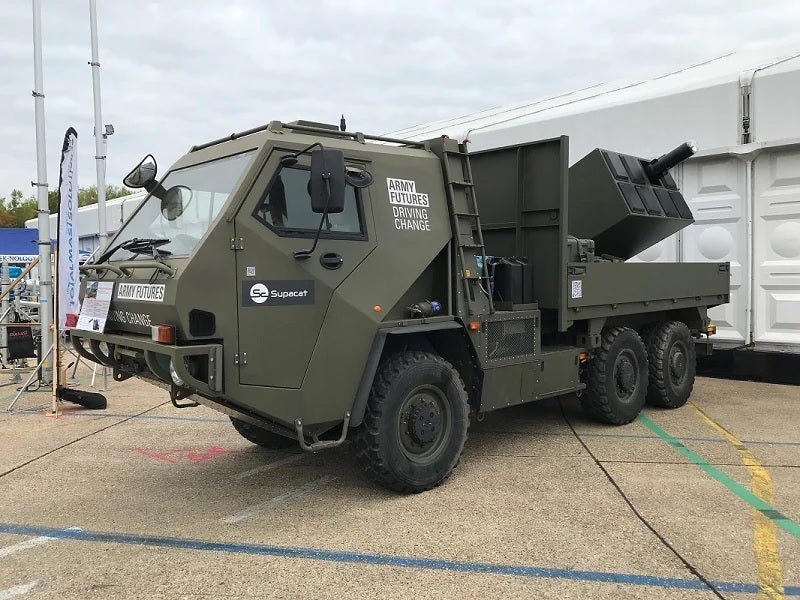
In addition, Wallace revealed that the British Army’s Experimental Trials Group would receive the first unit of a flatbed mounted Brimstone missile delivery system within the next “couple of months”. The programme, dubbed Project Wolfram, sees a collaboration by European missile manufacturer MBDA, UK vehicle manufacturer Supacat, and the MoD, to integrate the Brimstone onto a mobile delivery vehicle, providing a deadly medium-range precision fires system out to 12 miles.
The inspiration came from Ukraine’s use of the Brimstone system, delivered by the UK, which was then integrated onto a flatbed vehicle for use against Russian forces.
Fighting the last war
Despite these apparent successes, challenges remain. Daniel Morris, lead analyst, research and analysis, at GlobalData, said that an “overly bureaucratic MoD” meant that equipment took too long to get to operators, with the procurement process also suffering from “consistent changes in direction” and a “reluctance” to upgrade systems in a manageable timeframe.
“They always seem to be fighting the last war,” Morris explained.
For Sauer, a lack of funding, amplified by the Covid-19 pandemic, currency inflation, and political instability, would further undermine the relative capacity of the British defence industry compared to its peers, such as France.
“Though recent events (Ukraine) have spurred the UK Government and British Army to deliver upgrades more consistently, with several companies like Supacat and RBSL innovating rather quickly to deliver new solutions, the lack of capacity will continue to cause trouble,” Sauer said.
“The one saving grace does seem to be increased interest and willpower amongst allies, which could lead to more joint development and procurement programmes as those have been the most successful at delivering peer-level quality equipment. Thus, to make failing programmes deliverable, MoD should look to revitalise industrial base through steadier investment and resource pooling with allies to re-establish an industrial base capable of supporting the British Army in future.”




